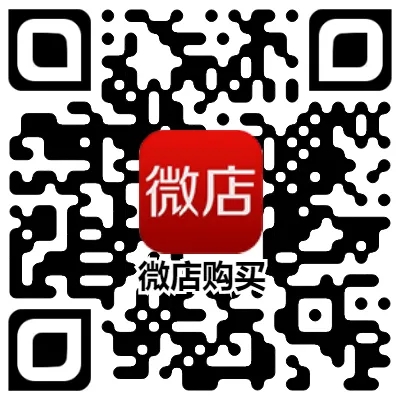| 1 |
张一文, 齐佳音, 方滨兴, 等. 非常规突发事件网络舆情热度评价指标体系构建[J]. 情报杂志, 2010, 29(11): 71-75, 117.
|
|
ZHANG Y W, QI J Y, FANG B X, et al. Research on the index system of public opinion on Internet for abnormal emergency[J]. Journal of intelligence, 2010, 29(11): 71-75, 117.
|
| 2 |
满媛媛, 刘佳宁. 国内突发事件网络舆情研究进展[J]. 情报科学, 2020, 38(12): 170-177.
|
|
MAN Y Y, LIU J N. Research progress of network public opinion on emergencies in China[J]. Information science, 2020, 38(12): 170-177.
|
| 3 |
中共中央关于进一步全面深化改革推进中国式现代化的决定[N]. 人民日报, 2024-07-22(001).
|
| 4 |
习近平. 高举中国特色社会主义伟大旗帜为全面建设社会主义现代化国家而团结奋斗——在中国共产党第二十次全国代表大会上的报告[J]. 党建, 2022(11): 4-28.
|
| 5 |
杨建梁, 刘越男, 祁天娇, 等. 重大公共卫生事件中民众诉求的主题挖掘与演变透视[J]. 图书馆论坛, 2021, 41(4): 121-131.
|
|
YANG J L, LIU Y N, QI T J, et al. Topic mining and evolution analysis of public demands during major public health events[J]. Library tribune, 2021, 41(4): 121-131.
|
| 6 |
YOU G, GAN S Q, GUO H, et al. Public opinion spread and guidance strategy under COVID-19: A SIS model analysis[J]. Axioms, 2022, 11(6): 296.
|
| 7 |
王晰巍, 文晴, 赵丹, 等. 新媒体环境下自然灾害舆情传播路径及网络结构研究: 以新浪微博“雅安地震”话题为例[J]. 情报杂志, 2018, 37(2): 110-116.
|
|
WANG X W, WEN Q, ZHAO D, et al. Research on online public opinion dissemination path and network structure of natural disaster in new media environment: A case study of the topic of "Ya'an earthquake" in sina weibo[J]. Journal of intelligence, 2018, 37(2): 110-116.
|
| 8 |
喻健, 唐亚娟. 高校重大突发事件与舆情监测[J]. 新闻爱好者, 2011(18): 148-149.
|
|
YU J, TANG Y J. Major emergencies in colleges and universities and public opinion monitoring[J]. Journalism lover, 2011(18): 148-149.
|
| 9 |
刘鹏程, 孙梅, 李程跃, 等. H7N9事件网络舆情分析及其对突发公共卫生事件应对的启示[J]. 中国卫生事业管理, 2014, 31(10): 784-786.
|
|
LIU P C, SUN M, LI C Y, et al. Network public opinion analysis about H7N9 events and its revelation for public health emergency response[J]. Chinese health service management, 2014, 31(10): 784-786.
|
| 10 |
NING P S, CHENG P X, LI J, et al. COVID-19-related rumor content, transmission, and clarification strategies in China: Descriptive study[J]. Journal of medical Internet research, 2021, 23(12): e27339.
|
| 11 |
CHEN Q, MIN C, ZHANG W, et al. Unpacking the black box: How to promote citizen engagement through government social media during the COVID-19 crisis[J]. Computers in human behavior, 2020, 110: 106380.
|
| 12 |
王建亚, 宇文姝丽. 网络舆情生态系统的构成及运行机制研究[J]. 情报理论与实践, 2014, 37(1): 55-58, 16.
|
|
WANG J Y, YUWEN S L. Research on the composition and operation mechanism of online public opinion ecosystem[J]. Information studies: Theory & application, 2014, 37(1): 55-58, 16.
|
| 13 |
张明, 杜运周. 组织与管理研究中QCA方法的应用: 定位、策略和方向[J]. 管理学报, 2019, 16(9): 1312-1323.
|
|
ZHANG M, DU Y Z. Application of QCA in organizational and management research: Positioning, strategies and directions[J]. Chinese journal of management, 2019, 16(9): 1312-1323.
|
| 14 |
王阳, 沈忱. 大学生网络舆论危机事件的生成演化机理与治理路径[J]. 当代青年研究, 2016(4): 32-39.
|
|
WANG Y, SHEN C. Generation, evolution mechanism and governance path of online public opinion crisis events among college students[J]. Contemporary youth research, 2016(4): 32-39.
|
| 15 |
郑万军. 突发危机事件与网络舆情疏导——“6.1”长江沉船事件和“8.12”天津爆炸案的比较[J]. 情报杂志, 2016, 35(6): 47-51.
|
|
ZHENG W J. Sudden crisis events and online public opinion guidance: A comparison of "6.1 Yangtze River Shipwreck" and "8.12 Tianjin Explosion"[J]. Journal of intelligence, 2016, 35(6): 47-51.
|
| 16 |
陈龙. “借题发挥”: 一种中国特色的网络舆论话语生成模式[J]. 新闻与传播研究, 2019, 26(12): 67-83, 127.
|
|
CHEN L. "Exploiting the topic": A discourse generation model of Chinese online public opinion[J]. Journalism & communication research, 2019, 26(12): 67-83, 127.
|
| 17 |
韩玮, 陈安. 基于焦耳定律的公共危机事件网络舆情热度模型研究[J]. 情报科学, 2021, 39(2): 24-33.
|
|
HAN W, CHEN A. A heat model of public crisis events' online public opinion based on Joule's law[J]. Information science, 2021, 39(2): 24-33.
|
| 18 |
周子明, 高慎波. 高校网络舆情的生成逻辑、风险特点及应对策略研究[J]. 情报科学, 2022, 40(3): 152-158.
|
|
ZHOU Z M, GAO S B. Research on the generation logic, risk characteristics and coping strategies of university online public opinion[J]. Information science, 2022, 40(3): 152-158.
|
| 19 |
张亚明, 高祎晴, 宋雯婕, 等. 信息生态视域下网络舆情反转生成机理研究——基于40个案例的模糊集定性比较分析[J]. 情报科学, 2023, 41(3): 66-73.
|
|
ZHANG Y M, GAO Y Q, SONG W J, et al. Research on the generation mechanism of online public opinion reversal from the perspective of information ecology: A fuzzy-set qualitative comparative analysis based on 40 cases[J]. Information science, 2023, 41(3): 66-73.
|
| 20 |
李明, 曹海军. 信息生态视域下突发事件网络舆情生发机理研究——基于40起突发事件的清晰集定性比较分析[J]. 情报科学, 2020, 38(3): 154-159, 166.
|
|
LI M, CAO H J. Research on the generation mechanism of online public opinion in emergencies from the perspective of information ecology: A crisp-set qualitative comparative analysis based on 40 cases[J]. Information science, 2020, 38(3): 154-159, 166.
|
| 21 |
王洛忠, 李建呈. 网络时代突发性公共危机化解的影响因素及作用机制——基于40个案例的清晰集定性比较分析[J]. 现代传播(中国传媒大学学报), 2021, 43(9): 81-86.
|
|
WANG L Z, LI J C. Influencing factors and mechanisms of sudden public crisis resolution in the internet era: A crisp-set qualitative comparative analysis based on 40 cases[J]. Modern communication (journal of communication university of China), 2021, 43(9): 81-86.
|
| 22 |
张瑜烨, 叶哲佑. 都市圈突发公共事件传播的影响因子研究——基于21个案例的定性比较分析[J]. 当代传播, 2023(2): 69-76.
|
|
ZHANG Y Y, YE Z Y. Research on influencing factors of public emergency communication in metropolitan areas: A qualitative comparative analysis based on 21 cases[J]. Contemporary communication, 2023(2): 69-76.
|
| 23 |
张宇, 沈杨, 王杰. 主体行动视角下的网络舆论政策议程触发机制探究——基于40例网络公共事件的清晰集定性比较分析[J]. 情报理论与实践, 2021, 44(12): 88-96.
|
|
ZHANG Y, SHEN Y, WANG J. Research on the triggering mechanism of online public opinion policy agenda from the perspective of subject action: A crisp-set qualitative comparative analysis based on 40 cases[J]. Information studies: Theory & application, 2021, 44(12): 88-96.
|
| 24 |
李思佳, 郑德铭, 孙正义. 微博中基于用户特征的突发事件信息传播分析[J]. 农业图书情报学报, 2023, 35(11): 86-97.
|
|
LI S J, ZHENG D M, SUN Z Y. Analysis of information dissemination of emergencies based on weibo user characteristics[J]. Journal of library and information science in agriculture, 2023, 35(11): 86-97.
|
| 25 |
彭祝斌, 范岳鋆, 朱晨雨. 欧洲焦点事件在华传播热度的影响因素及作用机制——基于30起案例的模糊集定性比较分析[J]. 新闻与传播研究, 2021, 28(2): 106-125, 128.
|
|
PENG Z B, FAN Y J, ZHU C Y. Influencing factors and mechanisms of European focus events' communication heat in China: A fuzzy-set qualitative comparative analysis based on 30 cases[J]. Journalism & communication research, 2021, 28(2): 106-125, 128.
|
| 26 |
朱代琼, 王国华. 突发事件中网民社会情绪产生的影响因素及机理——基于三元交互决定论的多个案定性比较分析(QCA)[J]. 情报杂志, 2020, 39(3): 95-104.
|
|
ZHU D Q, WANG G H. Influencing factors and mechanism of netizens' social emotions in emergencies: A multi-case qualitative comparative analysis (QCA) based on triadic reciprocal determinism[J]. Journal of intelligence, 2020, 39(3): 95-104.
|
| 27 |
GOEL S, ANDERSON A, HOFMAN J, et al. The structural virality of online diffusion[J]. Management science, 2016, 62(1): 180-196.
|
| 28 |
VOSOUGHI S, ROY D, ARAL S. The spread of true and false news online[J]. Science, 2018, 359(6380): 1146-1151.
|
| 29 |
LORENZ-SPREEN P, MØNSTED B M, HÖVEL P, et al. Accelerating dynamics of collective attention[J]. Nature communications, 2019, 10(1): 1759.
|
| 30 |
STIEGLITZ S, DANG-XUAN L. Emotions and information diffusion in social media: Sentiment of microblogs and sharing behavior[J]. Journal of management information systems, 2013, 29(4): 217-248.
|
| 31 |
GUO L, ROHDE J A, WU H D. Who is responsible for Twitter's echo chamber problem?Evidence from 2016 U.S. election networks[J]. Information, communication & society, 2020, 23(2): 234-251.
|
| 32 |
MCCOMBS M E, SHAW D L. The agenda-setting function of mass media[J]. Public opinion quarterly, 1972, 36(2): 176-187.
|
| 33 |
ENTMAN R M. Cascading activation: Contesting the white house's frame after 9/11[J]. Political communication, 2003, 20(4): 415-432.
|
| 34 |
WEBSTER J G. The marketplace of attention: how audiences take shape in a digital age[M]. Cambridge, USA: MIT Press, 2014.
|
| 35 |
ANDREWS L, BREWER M. Social media and government responsiveness: The case of the 2011 UK riots[J]. Government information quarterly, 2013, 30(4): 335-342.
|
| 36 |
李晚莲, 高光涵. 突发公共事件网络舆情热度生成机理研究——基于48个案例的模糊集定性比较分析(fsQCA)[J]. 情报杂志, 2020, 39(7): 94-100.
|
|
LI W L, GAO G H. Research on the generation mechanism of public opinion heat in public emergencies: A fuzzy-set qualitative comparative analysis (fsQCA) based on 48 cases[J]. Journal of intelligence, 2020, 39(7): 94-100.
|
| 37 |
牟冬梅, 邵琦, 杨鑫禹, 等. 信息生态视域下突发公共事件网络舆情运行方式研究[J]. 现代情报, 2022, 42(03): 22-30.
|
|
MU D M, SHAO Q, YANG X Y, et al. Research on the operation mode of online public opinion in public emergencies from the perspective of information ecology[J]. Journal of modern information, 2022, 42(3): 22-30.
|
| 38 |
DOUGLAS E J, SHEPHERD D A, PRENTICE C. Using fuzzy-set qualitative comparative analysis for a finer-grained understanding of entrepreneurship[J]. Journal of business venturing, 2020, 35(1): 105970.
|
| 39 |
LEPPÄNEN P T, MCKENNY A F, SHORT J C. Qualitative comparative analysis in entrepreneurship: Exploring the approach and noting opportunities for the future[M]//Research Methodology in Strategy and Management. Bingley, England: Emerald Publishing Limited, 2019: 155-177.
|
| 40 |
SCHNEIDER C Q, WAGEMANN C. Doing justice to logical remainders in QCA: Moving beyond the standard analysis[J]. Political research quarterly, 2013, 66(1): 211-220.
|

 ), ZHANG Fangshun3
), ZHANG Fangshun3







